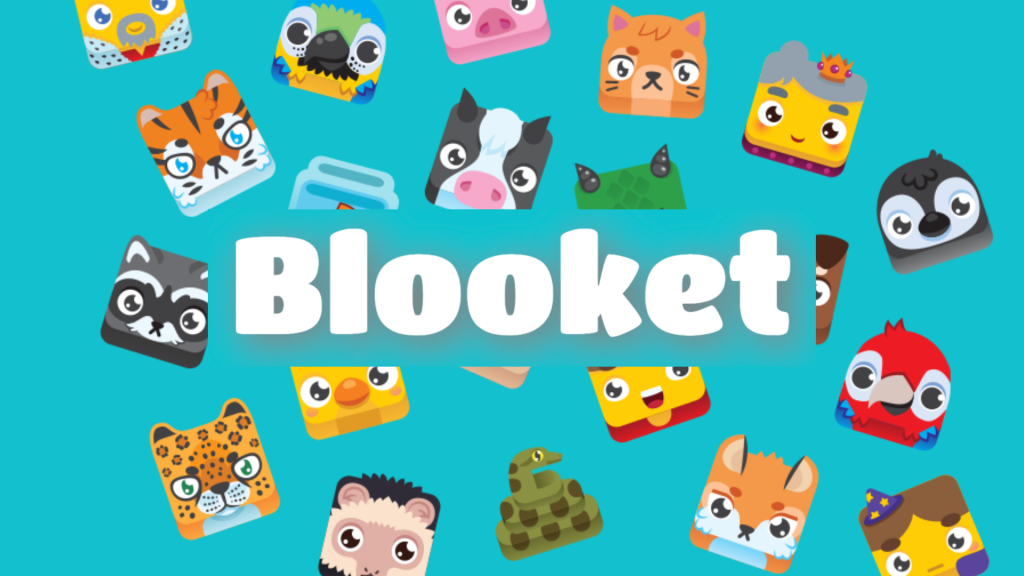EdTech Classroom’s Year in Review: Top 5 EdTech Tools of 2021

Last year, I shared my first annual EdTech Classroom’s Year in Review, featuring my top 5 edtech tools of 2020. Check out last year’s list here.
Since then, 2021 has presented its own set of challenges – from (more) distance learning to teacher burnout to new challenges in districts.
2021 also continued to show us the role that technology can play in not only the classroom, but also the lives of children and young people. We discovered new ways to use technology to amplify learning.
And we probably encountered plenty of tech issues along the way.
For my final blog post of 2021, I’m sharing my top 5 edtech tools of 2021.
1. Blooket

Blooket is “an exciting new take on the modern classroom review game. It aims to match action with education to create the ultimate learning experience!”
Review games aren’t particularly new to edtech – we’ve seen tools like Kahoot! and Quizzizz for a while now.
But unlike your typical review game, Blooket has tons of different game boards to choose from, so students can have a completely different experience every time they play a game.
The teacher can create their own question list, or they can search for a pre-made list instead. Teachers add the curriculum, and Blooket turns it into a fun game for the whole class.
Interested to learn more about gamification and game-based learning? Check out this blog post.
2. GarageBand

GarageBand is “a fully equipped music creation studio right inside your Mac — with a complete sound library that includes instruments, presets for guitar and voice, and an incredible selection of session drummers and percussionists.”
GarageBand makes it possible for students to record and produce their own music with and without an instrument.
Beyond its musical application, GarageBand can be used for a podcast project, where students write, record, edit, and share their own podcast episode.
I’ve written about the benefits of listening to podcasts in the classroom, but students can also use podcasting as a medium to share their learning as part of an in-depth project.

Note: Students can only access GarageBand on a Mac or iPad. If you are looking for alternative tools that are compatible with other devices (i.e. Chromebooks), consider checking out Soundtrap.
3. Explain Everything Whiteboard

Explain Everything is “a presentation app that can integrate content from many sources, enabling teachers and students to use it to create lessons, tutorials, and more for class or personal use” (Common Sense).
Last year, I included Google Jamboard, another digital whiteboarding tool, as one of my top edtech tools of 2020. While I still love Google Jamboard (and use it more regularly than Explain Everything), I’m including Explain Everything on my list this year because of the wide application it has in the classroom.
Explain Everything allows teachers to record themselves explaining concepts to share with students asynchronously. Explain Everything makes it easy and seamless to create digital lessons that incorporate a whiteboard.
But what is really exciting about Explain Everything is that students can use the tool to teach and explain concepts. Students can create their own tutorials to show what they know.
Learn how I used Explain Everything with my One by Wacom tablet (aff link) in the video below! To view Explain Everything in action, fast forward to 07:12
4. Google Arts and Culture

Google Arts & Culture is an “online platform of high-resolution images and videos of artworks and cultural artifacts from partner cultural organizations throughout the world.”
Google Expeditions used to be one of my go-to edtech tools as an educator. That’s why I felt pretty disappointed when I found out that Google Expeditions would no longer be available for use.
Enter Google Arts and Culture.
Google Arts and Culture brings high-quality artifacts, stories, and knowledge from over 2,000 leading cultural institutions right into your classroom. In doing so, Google Arts and Culture makes the world’s art and culture accessible online to anyone, anytime, anywhere.
5. Merge Edu

Merge EDU brings AR/VR learning into the classroom, using “spatial computing technology to allow students to touch and interact with 3D digital content.”
The Merge Cube, a physical 3D cube with sides that resemble QR codes, works with Merge EDU, “a hands-on digital learning platform that helps students learn science and STEM effectively with 3D objects and simulations they can touch, hold and interact with.”
Merge Cubes have been around for a few years now, but I’ve become increasingly more interested in this tool as a hands-on teaching aid.
Whether you are teaching about the solar system, ecosystems, life cycles, and more, Merge Edu has endless opportunities to leverage AR/VR to bring hands-on learning to life in your classroom.

Thank You!
Thank you for reading today’s blog post, featuring my top 5 edtech tools of 2021. What would you add to this list? Let me know in the comments below, DM me on Instagram @edtechclass, or email me at myedtechclassroom@gmail.com.